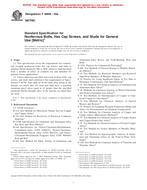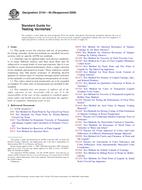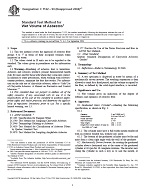1.1 This practice covers a logical basis for the derivation of a decision point and confidence limit when mean concentration is used for making environmental waste management decisions. The determination of a decision point or confidence limit should be made in the context of the defined problem. The main focus of this practice is on the determination of a decision point.
1.2 In environmental management decisions, the derivation of a decision point allows a direct comparison of a sample mean against this decision point, where similar decisions can be made by comparing a confidence limit against a concentration limit (for example, a regulatory limit, which will be used as a surrogate term for any concentration limit throughout this practice). This practice focuses on making environmental decisions using this kind of statistical comparison. Other factors, such as any qualitative information that may be important to decision-making, are not considered here.
1.3 A decision point is a concentration level statistically derived based on a specified decision error and is used in a decision rule for the purpose of choosing between alternative actions.
1.4 This practice derives the decision point and confidence limit in the framework of a statistical test of hypothesis under three different presumptions. The relationship between decision point and confidence limit is also described.
1.5 Determination of decision point and confidence limits for statistics other than mean concentration is not covered in this practice. This practice also assumes that the data are normally distributed. When this assumption does not apply, a transformation to normalize the data may be needed. If other statistical tests such as nonparametric methods are used in the decision rule, this practice may not apply. When there are many data points below the detection limit, the methods in this practice may not apply.
Product Details
- Published:
- 01/01/2003
- Number of Pages:
- 14
- File Size:
- 1 file , 170 KB


